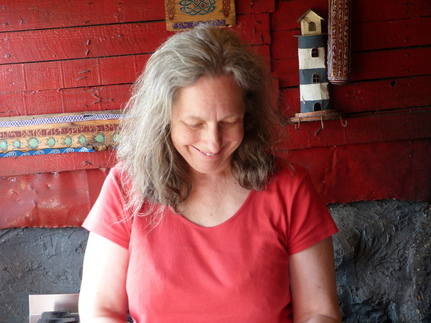ON LARD
Posted on

This time I am moved to write about lard, which in common with other animal and vegetable fats, and more than most, seems to cop the healthy eating prejudices and snobbery of people interested in food. As it happens, lard is very versatile and there are one or two things where I would use it in place of any other fat available. The obvious one is greasing cake tins, where it performs much better than oil or butter, but lard, despite its old-fashioned, unhealthy image and its association with hard times, can outperform its more prized competitors when it comes to cooking.
These days, there are three kinds of fat in the house – butter, lard and olive oil. When I was a child, we had a very small bottle of olive oil, but it was never used for cooking – it was used for things like getting wax out of ears. When I grew up and started cooking for myself, it took a while to shed the idea that olive oil was principally medicinal and not something to put with food.
I grew up in the sixties, the other side of the Flora revolution, when my mother, who cooked for us every day, always used lard to roast the potatoes for Sunday lunch. In those days before the frozen chip, she had a chip pan which was never used for anything other than deep frying. I can remember standing over the pan, a raw chip held between my thumb and forefinger, and dipping it cautiously into the heating lard to see if it was hot enough yet to start frying. The moment the tip of the chip went in and the fat sizzled and foamed enthusiastically around it, the game was on.
At the end of the frying session, she let the fat cool, then strained it into a glass bowl – never used for any other purpose – and kept the congealed fat in the fridge until the next time we had chips – once a week at most.
At some point in the sixties or seventies, chip shops began to move from lard to vegetable oil for their frying, something to do with lard boiling at higher temperatures and therefore being more of a fire hazard. But it is this very ability of lard to reach a higher temperature that makes it such a successful frying medium – the food is crisper and more flavoursome and seems to drain excess fat better as well.
Butter came in for a hammering in the seventies, the butt of an aggressive campaign by manufacturers of margarines claiming lower fat content and higher polyunsaturates that were better for your heart. This proved to be nothing more than powerful food producers taking on a natural product and pushing it out of the way in favour of profits. I was always fascinated by the piece of information stating that animal fats are the only foods that help the brain produce endorphins – the feel-good chemicals. Clarissa Dickson-Wright drew an interesting link between the rise of depression in our society and the dramatic drop in our consumption of butter and cream.
Another thing I’ve realised about frying with lard is that you need very little of it. I always use it for pancakes, like my mother did, although it took me a long time to discover the other trick of pancakes not sticking to the pan – especially the first one – which is heating the pan through first, until it’s smoking hot. I still use a lot of olive oil for frying, especially for pasta sauces, but lard is a very good companion when it comes to roasting root vegetables.
When my mother made pastry, she always used a mixture of lard and Stork. Now I do have a prejudice about Stork – I’ve never got on with processed vegetable fats, and I remember vividly the advertising campaign that ran in the sixties, challenging people on the street to see if they could tell the difference between Stork and butter. It appeared that nine out of ten people were blissfully unaware there even was a difference, something that even as a child I found impossible to understand. Stork tasted of chemicals and its flavour swamped everything you put on it, lurking powerfully beneath jam, treacle, cheese or ham and ruining them all. I’ve never trusted any mass produced, chemically enhanced and generally doctored fat product since.
Anyway, back to pastry. When I started cooking for myself, I became a butter snob, and always used it for pastry. I am not much of a pastry maker to begin with, and always found my finished product heavy and clunky, whereas my mother’s pastry was much lighter. One day, I tried it with lard and nothing else – and the difference was amazing! There was the crispness I’d been missing, and there was a pleasing, lightness of flavour as well. I was immediately converted. I even make scones with lard now – and it works beautifully for them, too.
And finally, if you buy a leg of pork joint, and you aren’t planning on roasting it, you can strip off the top layer of fat and skin, put it on a roasting pan and cook it at about 200 for a couple of hours to render the fat. Drain it off after about an hour, then put the half-cooked fat back in the oven to harvest the second batch. The result should be a ramekin dish or two of dripping, which keeps for ages in the fridge and can be used for frying and roasting.
Add a comment: